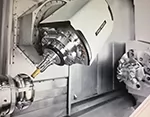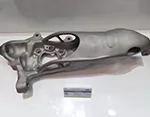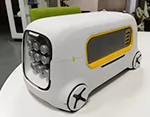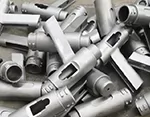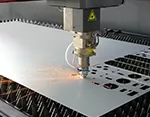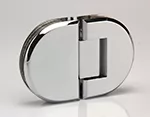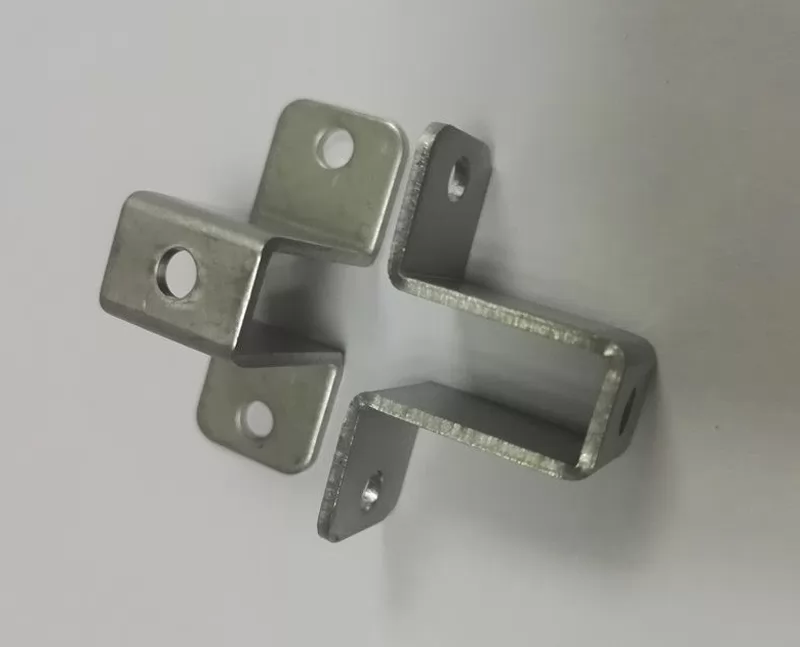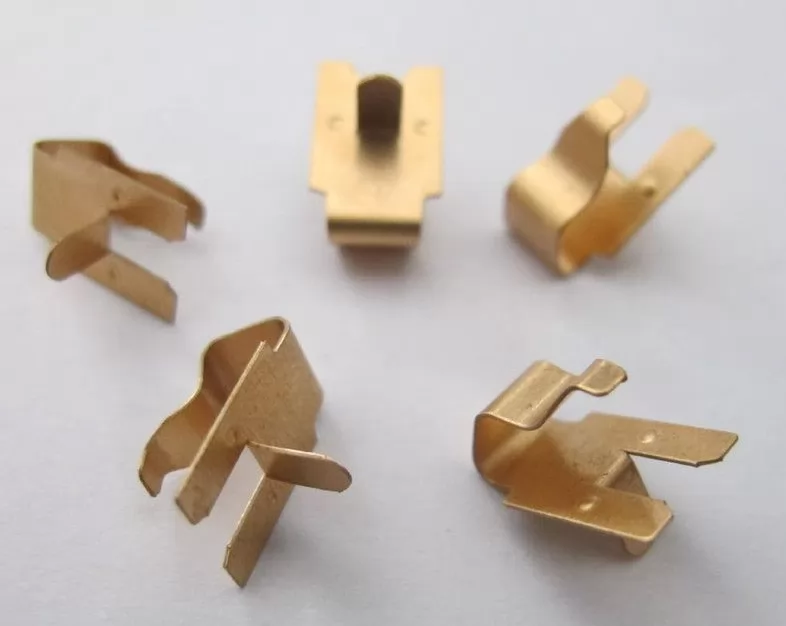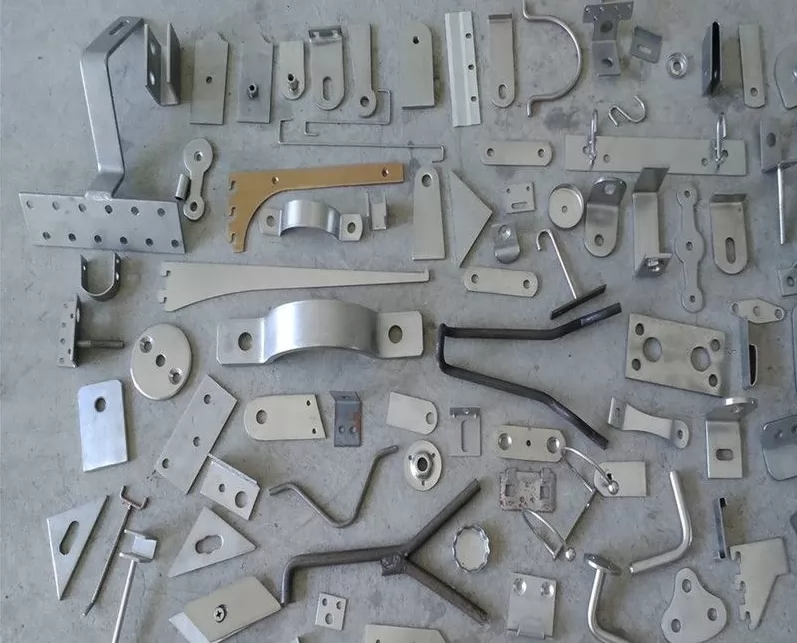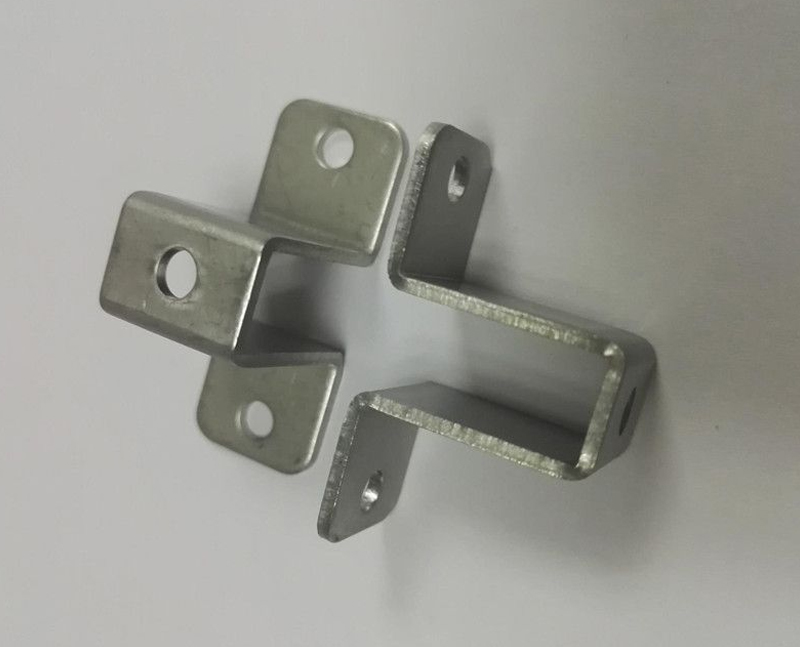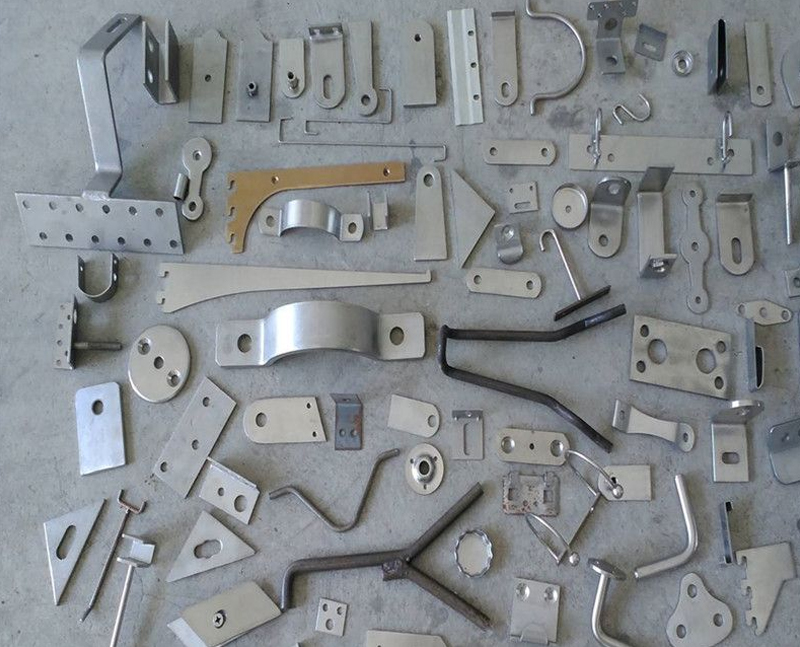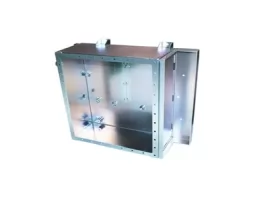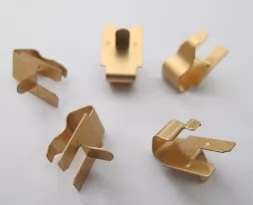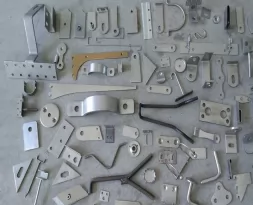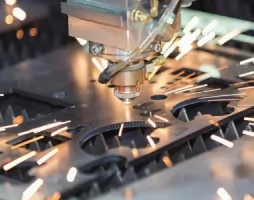-
Service
+
- CNC Precision Machining Service +
- Multi-Axis Simultaneous Machining Service +
- CNC Turning Service +
- Metal 3D Printing Service +
- Rapid Prototyping Service +
- Die Casting Service +
- Sheet Metal Fabrication Service +
-
Finish Serivces
+
- Polishing
- Grinding
- Brushed Finish
- Sand blasting
- Painting
- Powder Painting
- Anodizing
- Hard anodizing Service
- Passivation
- Zinc Plating
- Nickel Plating
- Chrome Plating
- Blackening
- Black Zinc Plating
- Teflon Coating
- Titanium Coating
- DLC Coating
- Laser Marking
- Silk Screen Printing
- Transfer Printing
- Micro Arc Oxidation
- Industries +
- About Us +
- Resource +
- Contact Us
- Quote

-
Service
-
>
-
>
-
>
-
>
-
>
-
>
-
>
-
>
-
- Industries
- About Us
- Resource
- Contact Us
Common Sheet Metal Stamping Process
Sheet metal stamping is a low-cost, high-speed manufacturing process that produces large quantities of identical metal parts, which makes an important contribution to many industrial applications, such as vehicles, equipment, electronics, appliances, tools, and much more.Sheet metal stamping is a low-cost, high-speed manufacturing process that produces large quantities of identical metal parts, which makes an important contribution to many industrial applications, such as vehicles, equipment, electronics, appliances, tools, and much more.
Sheet metal stamping is a low-cost, high-speed manufacturing process that produces large quantities of identical metal parts, which makes an important contribution to many industrial applications, such as vehicles, equipment, electronics, appliances, tools, and much more. For example, sheet metal stamping provides the machinery industry with a large number of wholesale mechanical parts.
The process of turning sheet metal into a useful part or component is called sheet metal stamping. The metal is fed into a press where a stamping tool (also known as a die) forms the desired shape. The die is pressed into or through the metal with great force. The force used in the process is measured in tons.
With the exception of some special processes, sheet metal stamping does not use heat. Instead, it is done by cold forming techniques. Even if heat is not used, the part will become hot due to the friction created by the pressure between the metal and the die.
Sheet Metal Stamping Parts
Common sheet metal stamping processes
There are basically only three components to sheet metal stamping - sheet metal, die and press machine - but any individual part may require multiple steps to reach its final form. The following guide explains some of the common processes that can occur during metal stamping.
Forming: Forming describes the process of transforming flat metal into another shape by applying a force. It can be done in one of a number of ways, depending on the design specification of the part. Through a series of operations, the metal can be transformed from a relatively simple shape into a complex one.
Blanking: Blanking is the most basic technique, when a sheet or blank is fed into a press, the die cuts the desired shape in the press. The resulting piece is known as a blank. The blank can either be the desired part, also known as a fully finished blank, or it can be continued to the subsequent forming steps.
Drawing: Drawing is a more complex operation and is the way in which veins or deep depressions are formed. Tension is used to carefully pull the material into the cavity to change its shape. Although the material may stretch as it is drawn, technicians try to avoid stretching to keep the material intact. Sinks, cooking equipment, and oil pans for vehicles are usually made withdrawing.
Piercing: Piercing is almost the opposite of blanking, but instead of saving blanks, technicians use the material around the outside of the press area. As an example, think of cutting biscuits from a rolled-out dough. The biscuit is saved during the drop; on the other hand, during the piercing process, the biscuit is discarded, and the hole-riddled remains are the desired outcome.
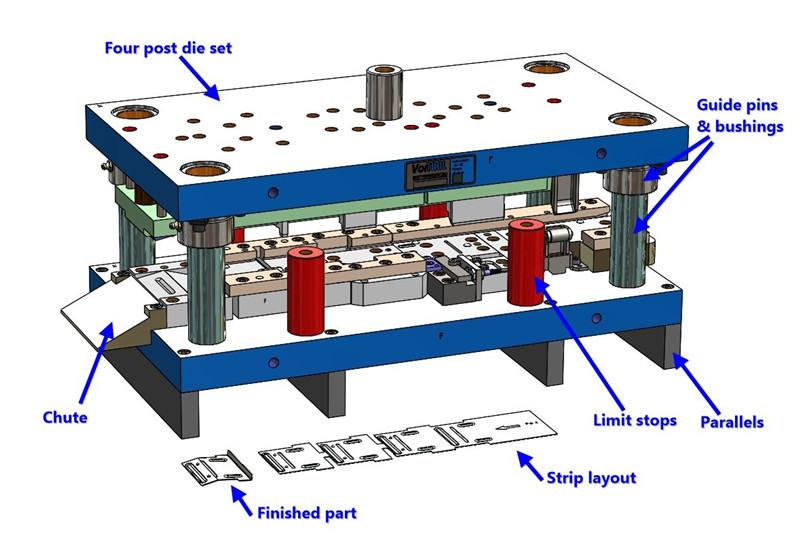
Sheet Metal Stamping Process
Types of stamping operations
Progressive die stamping
Progressive die stamping uses a tool called a progressive die, which contains several stamping stations that can be operated simultaneously on a metal slat. By combining all the necessary tools into a single die set, progressive die stamping is an excellent solution for high-volume production runs.
Transfer die stamping
Transfer die stamping is similar to progressive die stamping, but the part is separated from the metal stroke early in the process and transferred from one stamping station to the next by means of another mechanical transport system (e.g. a conveyor belt). This process is often used for larger parts that may need to be transferred to a different press.
Four-slide stamping
Four-slide stamping is also known as multi-slide or four-way stamping. This technique is best suited to making complex components with a large number of bends or twists. It uses four sliding tools, instead of one vertical ram, to shape the part by deforming it several times. Two sliders or plungers hit the workpiece horizontally to shape it and no tooling is used. Multi-slide stamping can also have more than four moving slides.
Four-slide stamping is a very versatile type of stamping, as different tools can be attached to each slide. It also has a relatively low cost and is fast to produce.
Sheet Metal Stamping Parts
Fine blanking
Fine blanking, also known as fine edge blanking, is valuable for providing high precision and smooth edges. Usually done on hydraulic or mechanical presses, or by a combination of both, the fine blanking operation consists of three distinct movements.
Clamping the workpiece or work material in place
Performance of the elimination operation
Ejection of the finished part
Fine blanking presses operate at higher pressures than those used in conventional stamping operations, so these higher operating pressures need to be taken into account when designing tools and machinery.
The edges produced by fine blanking avoid the fractures that occur with conventional tools and the surface flatness can exceed that of other stamping methods. As it is a cold extrusion technique, fine blanking is a single-step process, reducing the overall cost of manufacturing.
Deep drawing
Deep drawing involves drawing a sheet metal blank into a die by means of a punch to shape it. When the depth of the drawn part exceeds its diameter, the method is called "deep drawing". This type of forming is ideal for creating components that require multiple series diameters and is a cost-effective alternative to the turning process, which usually consumes more raw material. Common applications and products made by deep drawing include
Automotive components
Aircraft parts
Electronic relays
Tableware and cookware
Short Run Stamping
Short-run metal stamping requires minimal upfront tooling costs and can be an ideal solution for prototypes or small projects. After creating the blank, the manufacturer uses a combination of custom tooling components and die inserts to bend, punch or drill the part. Custom forming operations and smaller run sizes can result in higher per-part costs, but the absence of tooling costs can make short runs more cost-effective for many projects, especially those requiring quick turnaround.
At Kesu Hardware, our specialists can produce very detailed customized sheet metal stampings and assemblies to meet all customer design specifications. We serve customers from all industries and offer short to medium-term metal stampings and sheet metal prototypes for parts and assemblies of all sizes and shapes.
To find out more about our precision metal stampings and custom steel fabrication capabilities, please speak to an expert or email admin@kesugroup.com and we will be happy to answer your specific questions.

